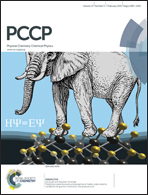An equation to calculate internuclear distances of covalent, ionic and metallic lattices
Abstract
This paper briefly describes the many different sets of ionic and covalent radii available. A simple model of ionic and covalent bonding is proposed and an equation to calculate internuclear distances of covalent, ionic and metallic lattices is described. Derivation of covalent radii and the use of a proposed model of metallic structure and bonding to derive ionic radii are discussed. A brief summary of the development of the simple equation for calculating internuclear distances of ionic compounds is provided. Values of internuclear distances calculated from the derived radii are compared to observed values and give good agreement, showing strong evidence that ionic and covalent radii are not additive and electronegativity influences bonding and internuclear distances. Ionic radii derived from the proposed model are applied to calculate lattice energies which agree well with literature values/values calculated by the Born Haber cycle. Work functions of transition metals are shown to be simple inverse functions of the derived radii. Internuclear distances of inter-metallic compounds are calculated and compared with observed values to show good agreement. This work shows that the proposed model of metallic structure complements the band theory and expressions introduced in this work can be used to predict ionic and covalent bond lengths (in different environments) that have not yet been determined as well as being a method for resolving bond type.


 Please wait while we load your content...
Please wait while we load your content...